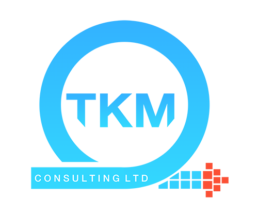In the dynamic landscape of today’s business world, agility is not just a buzzword—it’s a necessity. Agile methodologies empower organisations to adapt swiftly to change, foster innovation, and enhance collaboration among teams. One crucial aspect of steering an agile ship toward success is the effective implementation of Objectives and Key Results (OKRs). Let’s explore how setting OKRs in an agile organisation can propel teams toward achieving meaningful goals and continuous improvement.
Unlocking the Power of OKRs in Agile:
1. Alignment with Strategic Objectives:
Agile organizations thrive on alignment—aligning the efforts of various teams with overarching strategic goals. OKRs offer a structured framework for setting clear objectives that align with the organization’s mission. For example, if the strategic objective is to enhance customer satisfaction, a corresponding OKR could focus on improving user experience metrics.
2. Flexibility in the Face of Change:
Agile methodologies emphasize adaptability. OKRs, being flexible and time-bound, complement this agility. They allow organisations to pivot quickly when priorities shift or market conditions change. The iterative nature of OKRs aligns seamlessly with the sprint-based cycles of Agile, enabling teams to reassess and adjust goals regularly.
3. Collaboration and Transparency:
OKRs encourage collaboration by providing a shared understanding of organisational objectives. In an agile environment, where cross-functional teams are the norm, transparency is key. Sharing OKRs across teams promotes a collective sense of purpose, breaking down silos and fostering a culture of open communication.
4. Measurable Outcomes:
Key Results in OKRs provide a measurable way to track progress. In an agile organization, where continuous improvement is fundamental, having quantifiable outcomes allows teams to celebrate achievements and learn from setbacks. Regular retrospectives based on OKR results provide valuable insights for refining strategies.
5. Continuous Learning and Adaptation:
OKRs are not just about achieving goals; they are about learning and adapting. Agile organisations thrive on a culture of continuous improvement. Regular check-ins on OKRs provide opportunities for teams to reflect, share insights, and adjust their approaches, fostering a learning mindset.
Practical Steps for Implementing OKRs in Agile:
1. Involve Teams in OKR Setting:
Embrace the agile principle of self-organizing teams by involving them in the OKR-setting process. Teams that actively contribute to defining their objectives are more likely to feel ownership and commitment to achieving them.
2. Balance Ambition and Attainability:
OKRs should be challenging yet achievable. In an agile organisation, where teams are encouraged to push boundaries, finding the right balance ensures that objectives stretch teams without causing burnout or demotivation.
3. Regular Check-ins and Adaptation:
Agile emphasizes regular ceremonies, and OKRs should be no different. Establish a cadence for OKR check-ins, allowing teams to discuss progress, roadblocks, and adaptations. This iterative process ensures that OKRs stay relevant and impactful.
4. Celebrate Achievements and Learn from Setbacks:
Recognize and celebrate successes, whether they’re big or small. Equally important is learning from setbacks. Agile organisations understand that failure is an opportunity to learn and iterate, and OKRs provide a structured framework for this reflection.
Conclusion:
In an agile organisation, where change is a constant and collaboration is paramount, OKRs serve as a compass, guiding teams toward shared objectives. By embracing the principles of alignment, flexibility, collaboration, measurability, and continuous learning, agile organizations can unlock the full potential of OKRs, driving sustained success in an ever-evolving landscape. As the agile manifesto reminds us, it’s not just about following a plan; it’s about responding to change and harnessing it for competitive advantage.
